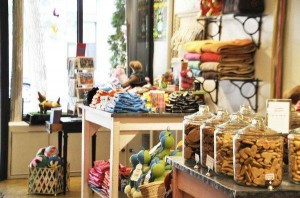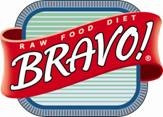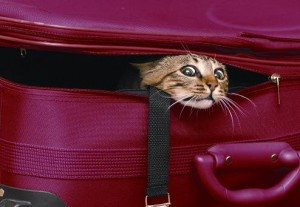Whether naturally hatched or hand fed, birds are innately wild and inquisitive creatures, therefore creating a stimulating habitat is crucial when deciding to become a bird owner.
Once the proper cage size is determined, it will need to be accessorized appropriately. It is important to keep birds of all sizes mentally stimulated and physically active. Without proper engagement in exercise, they can easily become bored and develop negative behaviors such as nipping, screaming and feather plucking.
 Toys not only provide an outlet against boredom, but also offer psychological security. Like humans, birds are social animals and require physical relationships. It is common for a bird to bond tightly with one toy it finds particularly appealing and spend its time huddling close to it when it is resting or sleeping.
Toys not only provide an outlet against boredom, but also offer psychological security. Like humans, birds are social animals and require physical relationships. It is common for a bird to bond tightly with one toy it finds particularly appealing and spend its time huddling close to it when it is resting or sleeping.
A bird’s size and personality play key roles when determining which toys are most beneficial to their environment. Large birds require toys that will not break when being manipulated with claws and feet, as broken or small pieces can pose a choking hazard.
Smaller breeds need toys that will not intimidate or scare them. Observing a bird and noting what it likes or dislikes provides insight to what toys the bird will find engaging. Preferences in color, texture and shape will assist bird owners when purchasing accessories.
Types of Toys
The choices of toys are almost as vast as the breeds of birds they are made for, but most fall under specific categories depending on their main purpose. Categories include foraging and treat, chewing, manipulative and exercise gyms. All cage toys can be classified as enrichment toys.
“Enrichment toys are anything that causes an animal to think or have to interact with its environment,” Donna Garrou, owner of Bird Stuff in Orange, Calif., said.
No matter the specific function, they will all allow the bird to learn from its habitat.
A variety of toys should always be at the bird’s disposal and should be repositioned, or replaced weekly.
“I recommend at least three toys that can be rotated; one, a tear-up toy that can be shredded or chewed, one a “beater” toy, and finally a foraging toy,” Garrou said.
She refers to the toy that becomes the bird’s “baby” as its beater toy.
“A beater toy is often a bird’s favorite toy as a baby, and they continue to love it all their life,” she said. “My 27-year-old African Grey still “beats” his stainless steel ball and ball toy each morning when he gets up.”
Treat toys reward for the bird periodically for play by dispensing a treat or by encasing one the bird can see but has to work in order to extract it. This keep birds engaged, even if they do not particularly enjoy playing. A foraging toy has the same basic premise, but uses the bird’s natural instinct to search for its food.
“A foraging toy will give the bird many hours of pleasure, work to get treats and/or its main diet out, helping with dexterity and reducing boredom,” Garrou said.
Garrou suggests Caitec’s line of “creative foraging systems” such as the Buffet Ball and the Foraging Wheel.
Treat and foraging toys are beneficial when returning the bird to its cage after outside activities. Barbara Heidenreich, a behavior/training consultant at Good Bird Inc. in Austin, Texas, uses a variety of treat toys available when returning birds to their cages. She rotates in new toys each time the bird is removed.
“This novelty can keep toys interesting and it makes going back in the cages more fun,” Heidenreich said.
She prefers to use the Fiesta Foraging Box by Kaytee.
“The bird gets the enrichment factor from destroying the box and also gets reinforced by treats hidden within the box,” she said.
A bird’s natural instinct tells them to chew. Many breeds have hooked beaks used for breaking open fruits and hard-shelled nuts. Including a chewing or shredding toy in their cages will satisfy their natural urges.
Popular choices of chewing and shredding toys are made from cardboard, wood such as pine or balsa, or knotted ropes. The purpose is for a bird to destroy these toys by ripping and shredding the cardboard or untying the knots in the rope, so replacing these types of toys will be necessary.
Garrou recommends the line of shredding toys from Planet Pleasures.
“One simple example is simply woven strips of palm called ‘Shredders’ that can be woven between bars or added to any toy to increase interest” Garrou said.
Garrou also suggests Oxbow’s ‘Timothy Twists’, which are similar to the ‘Shredders,’ but are made from Timothy hay.
-Erin Salley
 Bartholomew’s store is set up to feature different products at different heights, the product is always in tune with the season, as well as the colors that match the season, and she also burns a fig fragrance to give off a pleasurable smell in the store.
Bartholomew’s store is set up to feature different products at different heights, the product is always in tune with the season, as well as the colors that match the season, and she also burns a fig fragrance to give off a pleasurable smell in the store.
 While there is some truth to this, it is possible to run a successful amphibian program that capitalizes on the popular appeal of animals like dart frogs and offers plenty of opportunities for equipment and feeder-animal sales.
While there is some truth to this, it is possible to run a successful amphibian program that capitalizes on the popular appeal of animals like dart frogs and offers plenty of opportunities for equipment and feeder-animal sales. From divided double-compartment show shelters to high-tech, hard- and soft-sided carriers for travel, the market is bursting with an endless selection of cat carrier designs.
From divided double-compartment show shelters to high-tech, hard- and soft-sided carriers for travel, the market is bursting with an endless selection of cat carrier designs.